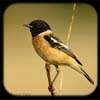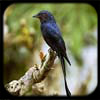 |
| |
|
|
World Heritage Convention |
 |
|
|
|













|
In India , there are five Natural World Heritage Sites, namely, Kaziranga National Park, Manas National Park, Keoladeo Wildlife Sanctuary, Sundarban National Park and Nandadevi National Park.
|
|
 |
UNESCO's MAB (Man and the Biosphere) program started in 1971 includes:
|
List of National Biosphere Reserves in India |
 |
-
Nilgiri ( 3 states ) - also a Global Biosphere Reserve
-
Nanda Devi ( Uttaranchal)
-
Nokrek ( Meghalaya )
-
The Great Nicobar
-
Gulf of Mannar ( Tamil Nadu ) - also a Global Biosphere Reserve
-
Manas ( Assam )
-
Sundarban - also a Global Biosphere Reserve
-
Simlipal
-
Dibru-Saikhowa ( Assam )
-
Dihang-dibang (Arunachal Pradesh)
-
Pachmarhi ( M.P.)
-
Khangchendzonga ( Sikkim )
|
Main Goals |
 |
-
Conservation of natural and cultural diversity
-
In-situ conservation of Biodiversity of natural and semi-natural Eco-systems
-
Sustainable Economic Development of human population living within and around Biosphere Reserve
-
Facilitate long-term Ecological studies, Environmental education and Training, and Research and Monitoring related to local, national and global issues of conservation and sustainable development
|
Zoning of Biosphere Reserve |
 |
Core Zone Securely
Protected Site for conserving Biological Diversity and undertaking non-destructive research and other low-impact uses like Education etc
Buffer Zone
Usually surrounding or adjoining the Core Zone, and is used for activities compatible with sound ecological practices
Transition Area
May contain a variety of agricultural activities, settlements and other uses and in which local communities, management agencies, scientists, NGOs and other stakeholders work together to manage and develop the Area's resources
|
Ramsar Convention |
 |
(Sustainable use of wetland for benefit of Eco-system people)
-
1263 Sites all over the Globe
-
In India , there are 25 Ramsar Sites, and another 6 are in pipeline ( including Sundarban)
-
Wetlands are classified into:
- Inland /Freshwater
- Coastal/Salt water
- Artificial Wetlands
|
What is a Wetland ? |
- Wetlands are areas of marsh, peatland or water,
- natural or artificial,
- permanent or temporary,
- with static or flowing water,
- Fresh, brackish or salt ,
- Includes marine water of depth, at low tides, less than six metres
|
Functions of Wetland : |
- Flood control
- Ground water recharging
- Biodiversity conservation
- Conservation of Wetland flora and fauna
- Biomass export
- Water transport
- Nutrient retention
- Micro-climate stabilisation
- Sediment retention and erosion control
- Eco- tourism
|























